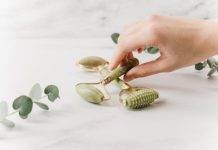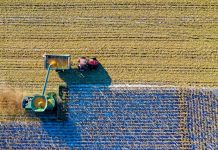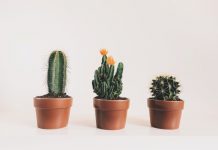Smooth to the touch, bright and naturally shiny, silk has been part of the self-care beauty regime for some time. From pillowcases to sleepwear, the natural protein fibre comes with many beauty and health benefits such as maintaining hydration, relieving skin irritation, preventing hair breakage and ultimately giving you a better night’s sleep. But as the beauty industry makes the move to a cruelty-free and sustainable culture, debate continues to arise over whether the process of harvesting silk is ethical.
Silk is a highly renewable source that poses a lower threat to the environment compared to other fabrics. Derived from silkworms, it’s made by spinning and weaving the strong fibres from the chrysalis. However, it’s the process of sourcing the silk that leaves behind a cruelty element.
One of the most common forms of silk comes from the Mulberry Silkworm also known as the Bombyx mori. It looks more like a caterpillar than a worm and munches on mulberry leaves. To create silk, these tiny creatures spin silk to create a cocoon that they’ll use for their transformation into a moth. It is the process that follows which has animal activists in fury, as these cocoons are detached from the leaf that it’s hanging on before being boiled, killing the pupa – the term used during a silkworm’s transformation – inside.
Some silk harvesters create silkworm breeding farms in an attempt to not take away from what’s left of the silkworm species in the wild, but this too is frowned upon.
The other side of this debate looks at the argument that silkworms are just insects and that insects are used in several other beauty products such as dye and lotions. But animal activists argue that insects are still animals and that by harvesting silk, animals are being harmed in the process.
After reading this mind-blowing information you might be wondering, where should I go from here?
The answer isn’t that simple. At times synthetic materials aren’t as sustainable as natural materials, so it’s really up to you as to whether you want to continue using such products. If you’re looking to make the switch, the PETA (People for the Ethical Treatment of Animals) recommends using nylon, milkweed seed pod fibres, silk-cotton tree and ceiba tree filaments, polyester, and rayon as alternatives, which are generally cheaper to buy and easier to source.
While the question of whether the production of silk is ethical is multifaceted, there is one message that we can get from this debate, that is: Everything comes with a cost in one way or another.

![5 Reasons You Should Travel Alone Airplane [image source: chau nguyen/ http://thedevilhatessweatpants.blogspot.com.au ], crowd ink, crowdink, crowdink.com, crowdink.com.au](https://crowdink.com/wp-content/uploads/2016/08/Chau-airplane-218x150.jpg)




























![5 Reasons You Should Travel Alone Airplane [image source: chau nguyen/ http://thedevilhatessweatpants.blogspot.com.au ], crowd ink, crowdink, crowdink.com, crowdink.com.au](https://crowdink.com/wp-content/uploads/2016/08/Chau-airplane-100x70.jpg)


